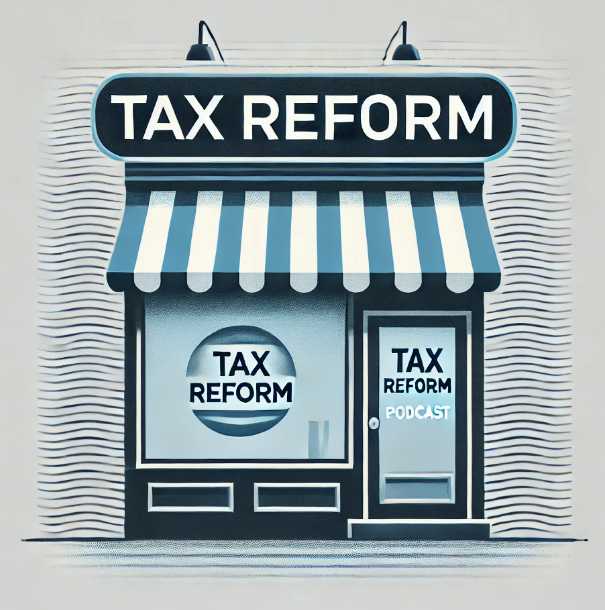Podcast: Play in new window | Download (Duration: 4:01 — 4.6MB) | Embed
Subscribe: Spotify | RSS | More

Audio Transcript
Welcome to The Ripple Effect, where we examine how economic policies impact small businesses. Today, we’re focusing on tax reform, specifically the effects of raising and lowering tax rates
As the election cycle intensifies, tax reform has emerged as a key issue, with significant implications for small businesses. While large corporations often dominate discussions, the effects on small businesses, the backbone of the economy, are equally crucial. Let’s explore the first, second, and third-order impacts of potential changes in corporate tax rates, deductions, and credits on the small business community.
First-Order Effects: Immediate Impact
Consider a small manufacturing company owned by Alex, who employs 25 people in a mid-sized town. As tax reform proposals emerge, Alex closely monitors potential changes to corporate tax rates. The most immediate, or first-order, effect of these changes is a direct shift in the company’s tax liability.
If the tax rate decreases, Alex’s business pays less in taxes, freeing up capital for reinvestment. This could lead to wage increases, hiring additional employees, or purchasing new equipment. Conversely, an increase in tax rates might force Alex to tighten the budget, potentially delaying expansion plans or cutting back on employee benefits.
Second-Order Effects: The Ripple Spreads
The decisions Alex makes as a result of these first-order effects trigger second-order impacts that extend beyond the company’s financials. Suppose the tax rate decreases, and Alex reinvests the savings into new machinery. This decision boosts productivity, allowing the company to produce more goods at a lower cost. Higher efficiency could lead to increased profits and lower prices, enhancing the company’s competitiveness.
Moreover, purchasing new machinery benefits the suppliers who produce this equipment, potentially leading to more jobs or expanded operations in those businesses. Additionally, Alex might expand the workforce to meet increased production capacity, stimulating local economic activity as new employees spend their earnings.
If tax rates increase and Alex has to cut back, the opposite effects occur. The company might reduce orders for new machinery, delay hiring, or even consider layoffs, negatively impacting suppliers, employees, and the local economy.
Third-Order Effects: Broader Economic Impact
As these second-order effects take hold, third-order impacts influence the broader economy. If small businesses like Alex’s reinvest tax savings into growth, the cumulative effect can be significant. Increased production and hiring across multiple small businesses contribute to a more robust economy, with rising consumer confidence and spending.
Moreover, expanded operations and improved competitiveness might encourage innovation, as businesses invest in research and development. This can lead to new products or services, further driving economic growth.
Conversely, if higher tax rates force small businesses to cut back, third-order effects could slow economic growth, reduce consumer spending, and potentially increase unemployment. Innovation might also suffer as businesses become more risk-averse and less willing to invest in new ventures.
Conclusion: The Stakes for Small Businesses
As voters head to the polls, it’s crucial to consider the full spectrum of tax reform effects on small businesses. While the immediate impact on tax liability is significant, the cascading second and third-order effects can shape the broader economic landscape.
Thoughtful consideration of tax reform policies and their potential impacts on small businesses is essential. By understanding these dynamics, voters can make informed decisions that support the long-term health and vitality of small businesses, ultimately strengthening the economy as a whole.